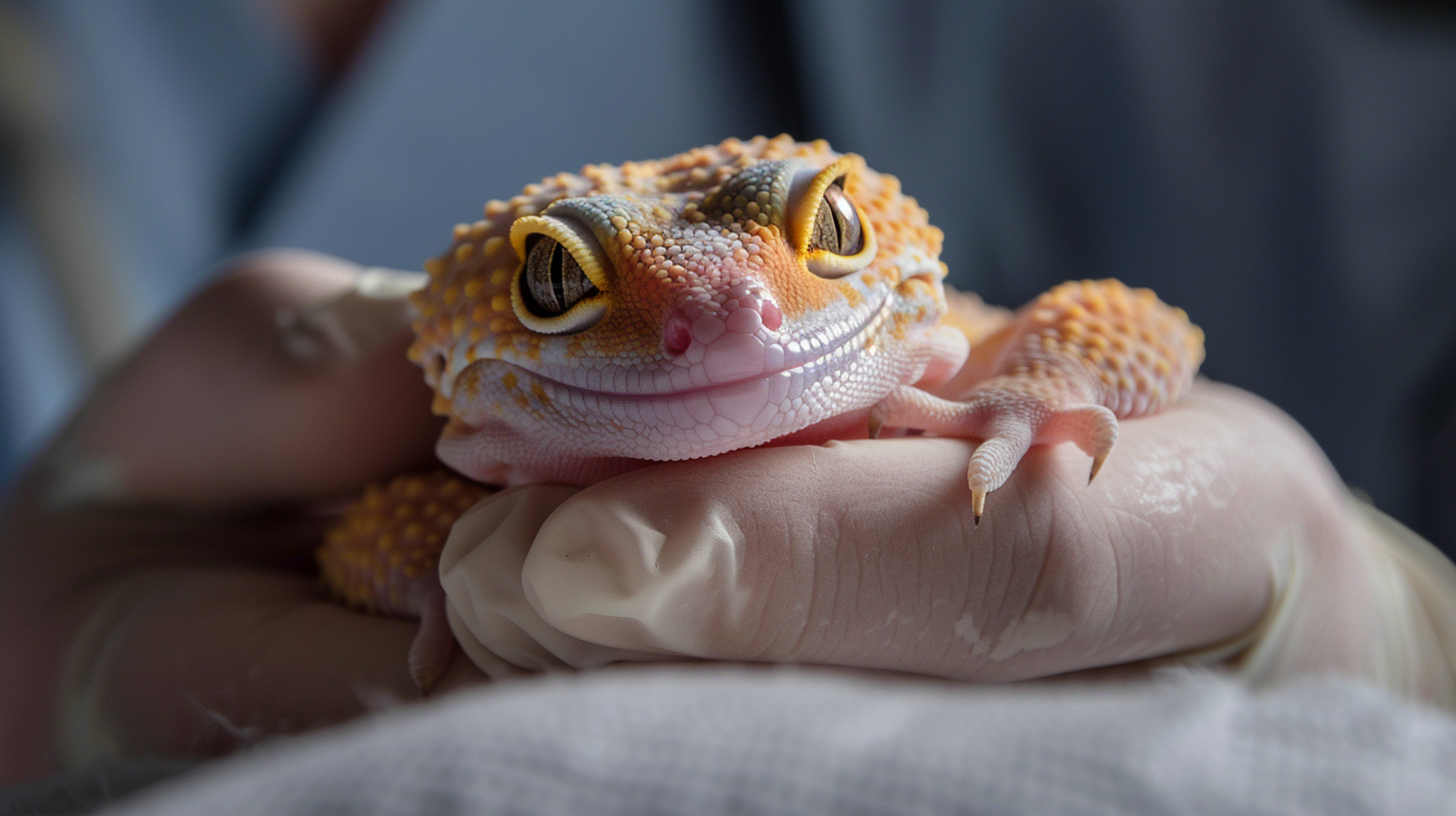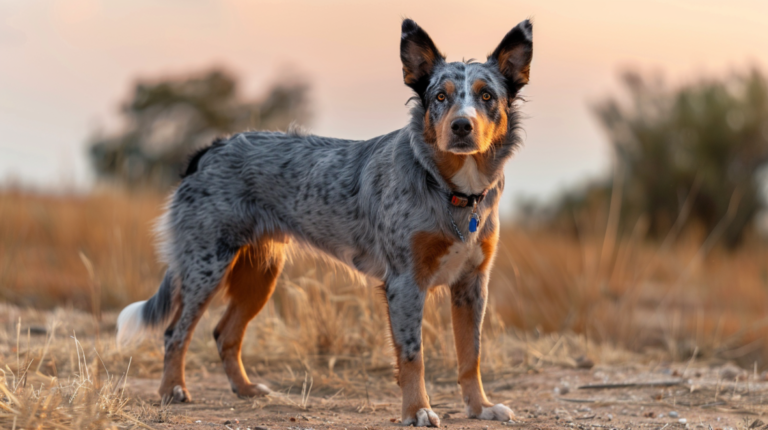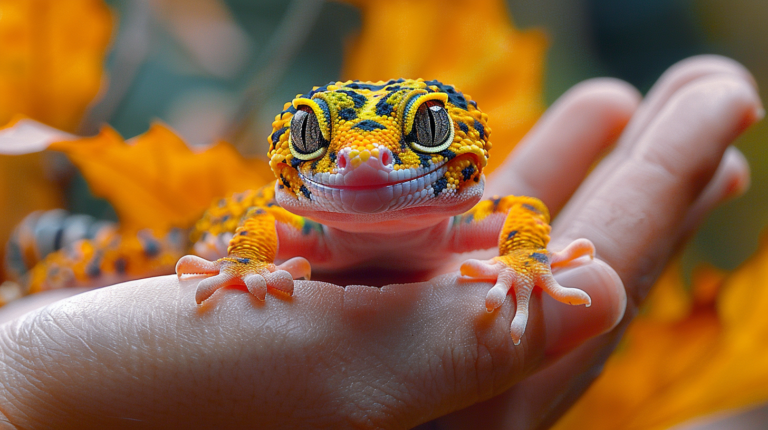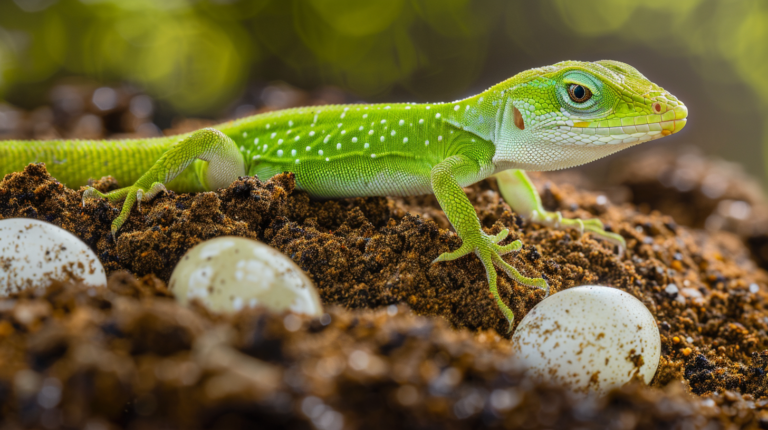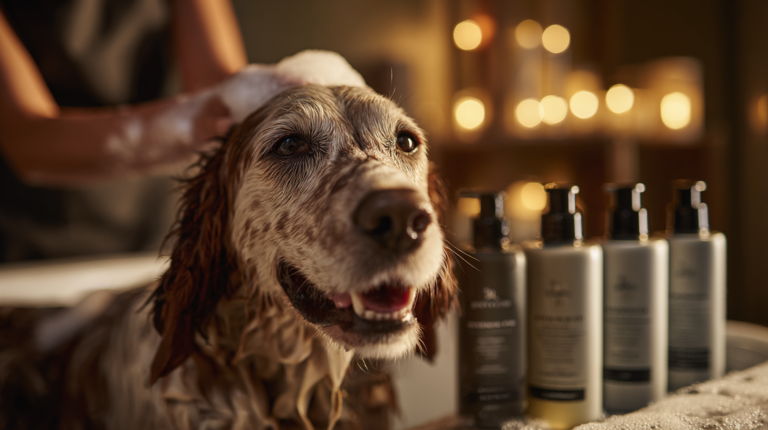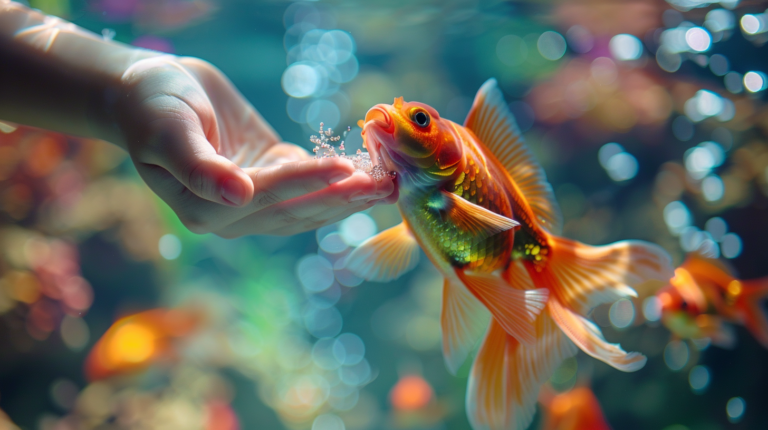Leopard gecko mouth rot can be deadly if untreated. Learn the 5 warning signs, causes, treatment options, and prevention tips to keep your gecko healthy and happy.
Table of Contents
Leopard geckos are among the most beloved reptile pets, known for their docile nature and relatively simple care requirements. However, like all animals, they’re susceptible to various health conditions that can seriously impact their quality of life. One such condition that every leopard gecko owner should be aware of is leopard gecko mouth rot – a bacterial infection that affects the oral cavity and can become life-threatening if left untreated.
Mouth rot, scientifically known as infectious stomatitis, is more common than many pet owners realize. According to veterinary records from exotic animal clinics, approximately 15-20% of captive reptiles will experience some form of oral infection during their lifetime. For leopard geckos specifically, this condition often develops due to poor husbandry practices, stress, or underlying health issues that compromise their immune system.
Understanding the early warning signs of leopard gecko mouth rot is crucial for any responsible pet owner. Early detection and prompt treatment can mean the difference between a quick recovery and a potentially fatal outcome. This comprehensive guide will walk you through everything you need to know about recognizing, treating, and preventing this serious condition in your beloved gecko.
What Is Leopard Gecko Mouth Rot?
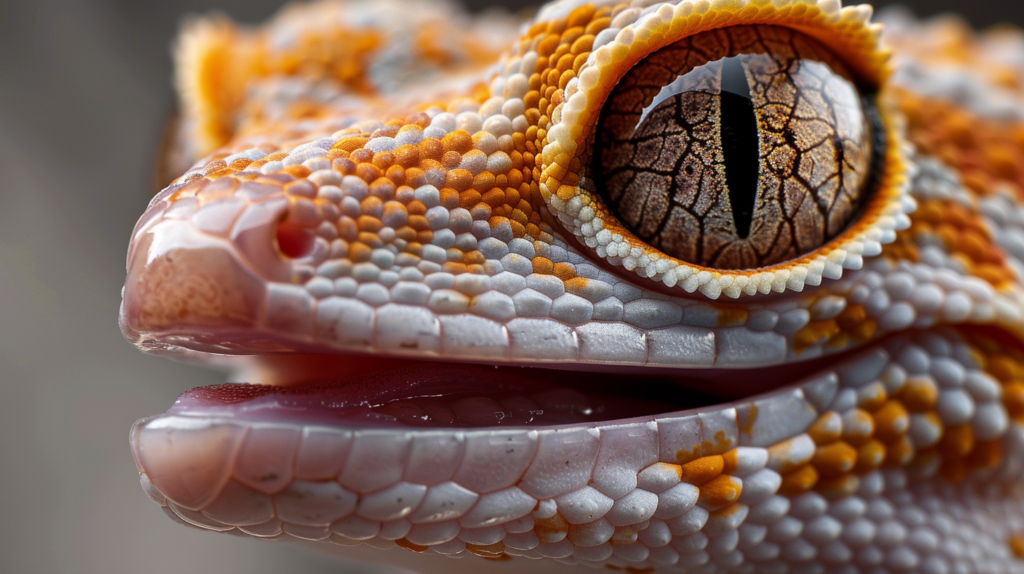
Mouth rot, or infectious stomatitis, is a bacterial infection that affects the mouth, gums, and throat of reptiles. In leopard geckos, this condition typically begins as a minor irritation or small wound in the oral cavity but can quickly escalate into a severe infection that spreads throughout the mouth and potentially into the bloodstream.
The condition is caused by opportunistic bacteria that naturally exist in the gecko’s environment but become problematic when the animal’s immune system is compromised. Common bacterial culprits include Pseudomonas, Aeromonas, and Klebsiella species, which thrive in warm, moist environments – exactly the conditions found in a gecko’s mouth.
The Progression of Mouth Rot
Mouth rot doesn’t develop overnight. It typically progresses through several stages:
Stage 1 (Early): Minor redness and swelling in the gums or mouth tissue Stage 2 (Moderate): Visible pus formation, increased inflammation, and possible tissue death Stage 3 (Advanced): Severe tissue necrosis, bone involvement, and systemic infection
Understanding this progression is vital because treatment becomes increasingly difficult and expensive as the condition advances. What might be resolved with simple topical treatments in the early stages could require extensive veterinary intervention, including surgery, in advanced cases.
The 5 Critical Signs of Leopard Gecko Mouth Rot

1. Visible Discoloration and Swelling Around the Mouth
The first and most obvious sign of developing mouth rot is abnormal coloration around your gecko’s mouth area. Healthy leopard geckos have clean, pale pink to white gum tissue. When mouth rot begins to develop, you’ll notice:
- Redness or inflammation along the gum line
- Yellow or greenish discoloration of the mouth tissues
- Swelling that makes the mouth appear puffy or distorted
- Dark spots or patches on the gums or inside the mouth
This discoloration often starts small – perhaps just a tiny red spot – but can spread rapidly if conditions are right for bacterial growth. The swelling may be subtle at first, appearing as a slight puffiness around the lips or gum line.
What to look for specifically:
- Check your gecko’s mouth during regular handling sessions
- Look for any departure from the normal pale coloration
- Pay attention to asymmetry – one side of the mouth looking different from the other
- Note any changes in the texture of the mouth tissue
2. Difficulty Eating or Complete Loss of Appetite
Leopard geckos are typically enthusiastic eaters, so any significant change in their feeding behavior should be taken seriously. Mouth rot causes considerable pain, making eating uncomfortable or even impossible.
Early feeding-related symptoms include:
- Reluctance to strike at prey
- Dropping food items before swallowing
- Taking longer than usual to consume meals
- Showing interest in food but not actually eating
Advanced symptoms may include:
- Complete refusal to eat
- Visible pain responses when attempting to open the mouth
- Drooling or excessive saliva production
- Gagging or choking sounds during feeding attempts
Dr. Sarah Mitchell, a veterinarian specializing in exotic pets, notes: “I’ve seen cases where owners assumed their gecko was simply being picky about food, when in reality, the animal was in significant pain from an oral infection. Any sudden change in appetite warrants immediate veterinary attention.”
3. Excessive Mouth Breathing or Gaping
While leopard geckos may occasionally open their mouths to regulate temperature, persistent mouth breathing or gaping is abnormal and often indicates respiratory distress or oral pain.
Signs to watch for:
- Mouth held open for extended periods
- Visible effort or strain when breathing
- Unusual positioning of the head or neck
- Audible breathing sounds
Mouth rot can cause swelling that partially obstructs the airway, forcing the gecko to breathe through its mouth. Additionally, the pain from the infection may cause the animal to hold its mouth in an abnormal position to minimize discomfort.
4. Thick, Cottage Cheese-Like Discharge
One of the most distinctive signs of advanced mouth rot is the presence of thick, white or yellowish discharge that resembles cottage cheese. This material is actually a combination of dead tissue, bacteria, and white blood cells – the body’s attempt to fight the infection.
Characteristics of mouth rot discharge:
- Thick, chunky consistency
- White, yellow, or greenish color
- Foul odor
- May be visible on the outside of the mouth or only seen when the mouth is opened
This discharge is different from normal saliva and should never be ignored. The presence of this material indicates that the infection has progressed beyond the initial stages and requires immediate veterinary intervention.
5. Behavioral Changes and Lethargy
Pain and systemic infection can cause significant behavioral changes in leopard geckos. A normally active, alert gecko may become withdrawn and lethargic when suffering from mouth rot.
Behavioral indicators include:
- Decreased activity levels
- Hiding more than usual
- Reluctance to be handled
- Changes in normal routines (such as not coming out to bask)
- Apparent discomfort or agitation
These behavioral changes often accompany the physical symptoms and can be some of the first signs that something is wrong. Because leopard geckos are generally hardy animals that don’t typically show illness until it’s advanced, any significant behavioral change should prompt a thorough health assessment.
Understanding the Causes of Mouth Rot
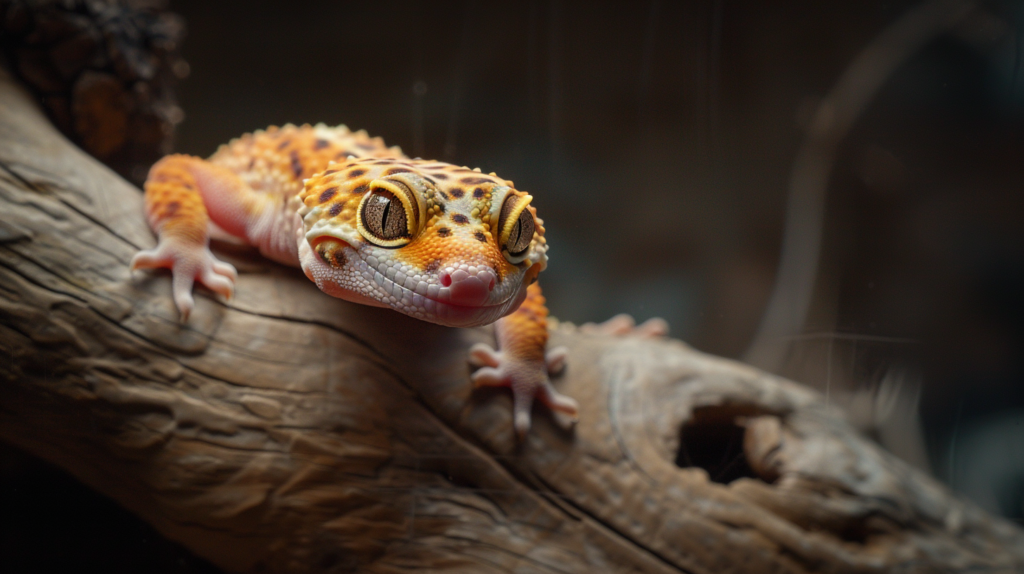
Environmental Factors
Poor Habitat Conditions The most common cause of mouth rot in captive leopard geckos is suboptimal husbandry. Bacteria thrive in environments that are too humid, too dirty, or improperly heated.
- Excessive humidity: Leopard geckos require relatively low humidity (30-40%). Higher levels create ideal conditions for bacterial growth
- Poor ventilation: Stagnant air allows bacteria to proliferate
- Inadequate cleaning: Accumulated waste and uneaten food provide breeding grounds for harmful bacteria
- Incorrect temperatures: Both too hot and too cold conditions can stress the immune system
Substrate Issues Certain substrates can contribute to mouth rot development:
- Sand or loose substrates that can cause mouth injuries
- Substrates that retain moisture and harbor bacteria
- Sharp or abrasive materials that can create entry points for infection
Stress and Immune System Compromise
Chronic stress significantly weakens a leopard gecko’s immune system, making them more susceptible to infections like mouth rot.
Common stress factors include:
- Overcrowding
- Inadequate hiding spots
- Handling too frequently or roughly
- Presence of other pets or predators
- Loud noises or vibrations
- Inconsistent day/night cycles
Nutritional Deficiencies
Poor nutrition can compromise immune function and make geckos more susceptible to infections. Key nutritional factors include:
- Vitamin A deficiency: Critical for maintaining healthy mucous membranes
- Vitamin C deficiency: Important for immune system function
- Calcium imbalances: Can affect overall health and healing ability
- Poor quality feeder insects: May lack essential nutrients
Injuries and Trauma
Physical injuries to the mouth area can create entry points for bacteria:
- Bites from aggressive tank mates
- Injuries from sharp decorations or substrate
- Damage from improperly sized prey items
- Self-inflicted injuries from glass surfing or escape attempts
Treatment Options for Leopard Gecko Mouth Rot

Veterinary Intervention
Immediate Professional Assessment The moment you suspect mouth rot, schedule an appointment with a reptile-experienced veterinarian. Time is critical with this condition, and delaying treatment can result in permanent damage or death.
Diagnostic Procedures Your veterinarian may perform several diagnostic tests:
- Physical examination: Visual assessment of the oral cavity
- Bacterial culture: Identifies specific bacteria and appropriate antibiotics
- Cytology: Microscopic examination of discharge or tissue samples
- Radiographs: May be needed if bone involvement is suspected
Professional Treatment Methods
Antibiotic Therapy Most cases of mouth rot require systemic antibiotic treatment:
- Injectable antibiotics (most common and effective)
- Oral antibiotics (for mild cases or when injections aren’t feasible)
- Topical antibiotics (used in conjunction with systemic treatment)
Surgical Intervention Advanced cases may require surgical treatment:
- Debridement of dead tissue
- Drainage of abscesses
- Removal of severely damaged tissue
- In extreme cases, partial jaw removal may be necessary
Supportive Care at Home
While veterinary treatment is essential, proper home care plays a crucial role in recovery:
Environmental Management
- Maintain optimal temperatures (88-92°F warm side, 78-80°F cool side)
- Ensure proper humidity levels (30-40%)
- Provide excellent ventilation
- Use paper towels or other easily cleaned substrates during treatment
Nutritional Support
- Offer easily digestible foods
- Consider hand-feeding if necessary
- Provide vitamin supplementation as directed by your veterinarian
- Ensure adequate hydration
Monitoring and Documentation
- Keep detailed records of symptoms and progress
- Photograph the affected area to track changes
- Monitor eating, drinking, and elimination
- Note any behavioral changes
Prevention Strategies
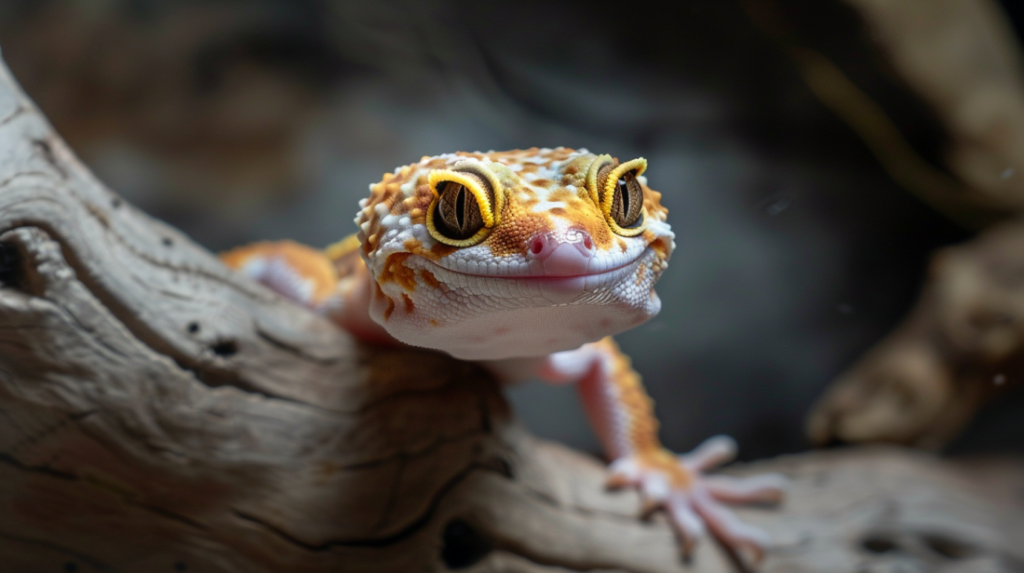
Optimal Husbandry Practices
Habitat Setup Creating an ideal environment is your first line of defense against mouth rot:
| Aspect | Optimal Range | Why It Matters |
| Temperature (Warm Side) | 88-92°F | Proper digestion and immune function |
| Temperature (Cool Side) | 78-80°F | Allows for thermoregulation |
| Humidity | 30-40% | Prevents bacterial overgrowth |
| Lighting | 12-hour light/dark cycle | Maintains natural circadian rhythms |
| Substrate | Paper towels, reptile carpet, or tile | Easy to clean and doesn’t harbor bacteria |
Cleaning Protocol Maintain a strict cleaning schedule:
- Daily: Remove uneaten food and waste
- Weekly: Deep clean water dish and spot-clean habitat
- Monthly: Complete substrate change and habitat disinfection
- As needed: Clean any soiled areas immediately
Stress Reduction Techniques
Environmental Enrichment
- Provide multiple hiding spots
- Ensure adequate space (minimum 20 gallons for adult geckos)
- Use natural decorations that don’t have sharp edges
- Maintain consistent temperature and lighting schedules
Handling Best Practices
- Limit handling to necessary interactions
- Support the gecko’s body properly when handling
- Avoid handling during shedding periods
- Watch for stress signals and respond appropriately
Nutritional Excellence
Feeder Insect Quality
- Purchase from reputable suppliers
- Gut-load insects before feeding
- Dust with appropriate calcium and vitamin supplements
- Vary diet with different insect types
Supplementation Schedule
- Calcium with D3: 2-3 times per week for adults
- Calcium without D3: Available constantly
- Multivitamin: Once per week
- Adjust based on age, breeding status, and health condition
Regular Health Monitoring
Weekly Health Checks Perform routine examinations to catch potential problems early:
- Mouth examination: Look for discoloration, swelling, or discharge
- Body condition: Check for weight loss or muscle wasting
- Skin condition: Monitor for retained shed or injuries
- Behavior assessment: Note any changes in activity or appetite
Record Keeping Maintain detailed health records including:
- Feeding schedule and amounts
- Shedding cycles
- Weight measurements
- Any observed symptoms or concerns
- Veterinary visits and treatments
When to Seek Emergency Care
Some situations require immediate veterinary attention, even if it means visiting an emergency clinic:
Immediate Emergency Signs:
- Complete inability to eat for more than 48 hours
- Severe swelling that prevents mouth closure
- Signs of systemic illness (lethargy, loss of coordination)
- Profuse bleeding from the mouth
- Difficulty breathing
Urgent but Not Immediate Signs:
- First appearance of mouth discoloration or swelling
- Gradual decrease in appetite over several days
- Mild discharge from the mouth
- Behavioral changes without other symptoms
Remember that leopard geckos are prey animals and naturally hide signs of illness. By the time symptoms are obvious, the condition may already be advanced.
Recovery and Long-Term Management
Recovery Timeline
The recovery process varies significantly depending on the severity of the infection and how quickly treatment was initiated:
Mild Cases (Stage 1):
- Treatment duration: 7-14 days
- Full recovery expected with proper treatment
- Minimal long-term effects
Moderate Cases (Stage 2):
- Treatment duration: 2-4 weeks
- Good prognosis with appropriate veterinary care
- May require ongoing monitoring
Severe Cases (Stage 3):
- Treatment duration: 4-8 weeks or longer
- Prognosis depends on extent of tissue damage
- May have permanent effects on eating ability
Long-Term Care Considerations
Ongoing Veterinary Monitoring Geckos that have experienced mouth rot should have regular follow-up examinations:
- Initial follow-ups every 1-2 weeks during treatment
- Monthly check-ups for 3-6 months post-recovery
- Annual wellness exams thereafter
Dietary Modifications Some geckos may require permanent dietary changes:
- Smaller prey items to reduce mouth trauma
- Softer-bodied insects if jaw function is compromised
- More frequent, smaller meals
- Continued vitamin supplementation
Environmental Vigilance Maintain extra attention to husbandry details:
- Monitor humidity levels more closely
- Increase cleaning frequency
- Provide stress-free environment
- Watch for early signs of recurrence
Cost Considerations
Understanding the financial implications of mouth rot treatment can help you prepare for this potential health issue:
Veterinary Costs:
- Initial examination: $50-150
- Diagnostic tests: $100-300
- Antibiotic treatment: $50-200
- Follow-up visits: $50-100 each
- Surgical intervention: $300-1,000+
Prevention Costs:
- Proper habitat setup: $200-500
- Quality food and supplements: $20-40 monthly
- Regular veterinary check-ups: $100-200 annually
The cost of prevention is always significantly less than the cost of treatment, making excellent husbandry practices not just healthier for your pet, but more economical in the long run.
For more expert pet care tips and product recommendations, visit BlithePet.com — your trusted source for pet wellness.
Frequently Asked Questions
How long does it take for leopard gecko mouth rot to develop?
Mouth rot can develop within days to weeks, depending on the underlying cause and the gecko’s immune system status. Poor husbandry conditions can accelerate the process, while a healthy gecko with minor mouth trauma might take longer to develop a full infection. Early intervention is crucial regardless of the timeline.
Can leopard gecko mouth rot spread to other reptiles?
While mouth rot itself isn’t directly contagious between reptiles, the bacterial species that cause it can spread through contaminated surfaces, water dishes, or shared equipment. If you have multiple reptiles, quarantine the affected animal and thoroughly disinfect all shared items to prevent cross-contamination.
Is mouth rot painful for leopard geckos?
Yes, mouth rot causes significant pain, which is why affected geckos often stop eating and may exhibit behavioral changes. The infection creates inflammation, tissue damage, and pressure in the mouth cavity, all of which contribute to discomfort. Pain management is an important part of treatment.
Can I treat leopard gecko mouth rot at home without a veterinarian?
While you can provide supportive care at home, mouth rot requires professional veterinary treatment with antibiotics to prevent the infection from becoming life-threatening. Home remedies or over-the-counter treatments are not sufficient for treating bacterial infections and may actually worsen the condition.
How can I prevent mouth rot from recurring?
Prevention focuses on maintaining optimal husbandry conditions: proper temperatures, appropriate humidity levels, excellent hygiene, stress reduction, and proper nutrition. Regular health monitoring helps catch potential issues early. Once a gecko has had mouth rot, they may be more susceptible to recurrence, making preventive care even more critical.
What’s the difference between mouth rot and normal shedding around the mouth?
Normal shedding involves the outer layer of skin peeling away in pieces, typically white or translucent in color. Mouth rot involves infected tissue that appears discolored (yellow, green, or dark), may have a foul odor, and is often accompanied by swelling and pain. Shedding is painless and doesn’t affect eating behavior.
Conclusion
Leopard gecko mouth rot is a serious but preventable condition that requires immediate attention and professional treatment. By understanding the five critical warning signs – discoloration and swelling, difficulty eating, mouth breathing, cottage cheese-like discharge, and behavioral changes – you can catch this condition early when treatment is most effective.
The key to preventing mouth rot lies in maintaining excellent husbandry practices: proper temperatures, appropriate humidity levels, impeccable cleanliness, stress reduction, and optimal nutrition. Regular health monitoring allows you to spot potential problems before they become serious health threats.
Remember that leopard geckos are masters at hiding illness, so any deviation from normal behavior or appearance should be taken seriously. When in doubt, consult with a reptile-experienced veterinarian who can provide proper diagnosis and treatment.
Early intervention not only saves your beloved pet from unnecessary suffering but also significantly reduces treatment costs and improves the chances of a full recovery. With proper care and attention, your leopard gecko can live a long, healthy life free from the complications of mouth rot.
Have a similar experience with your pet? Share it in the comments below!

